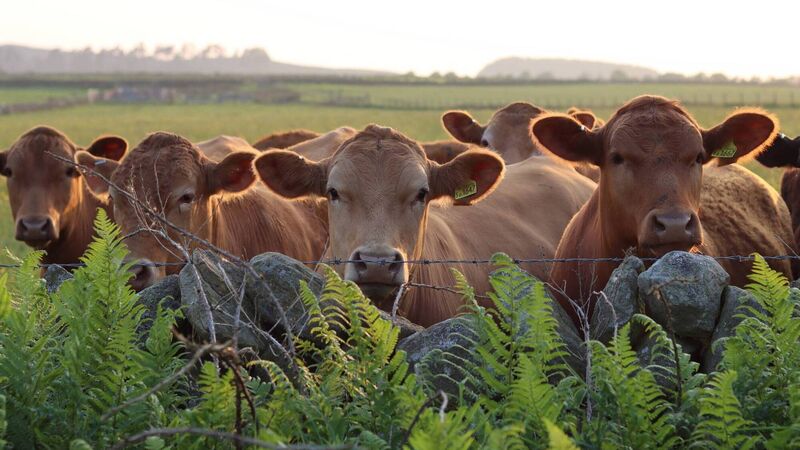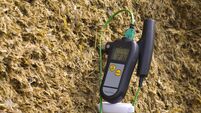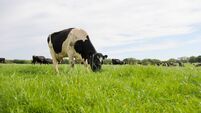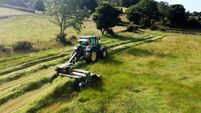Brian Reidy: Weanling sales and managing grass for suckler performance

Some say successful beef and dairy enterprises are one-third breeding, one-third feeding and one-third management. But in truth, it's 100% management, writes independent ruminant nutritionist Brian Reidy.
Demand for quality suckler-bred bull weanlings is excellent at the moment, and there have been some special weanling sales lately, which is much earlier in the season than we would normally see them.
With top quality lots reaching €5 and over €6/kg, it got me thinking about the detail required to achieve this quality of animal to achieve these well-deserved prices. As the old saying goes, “you only get out what you put in”.
Quality stock will always make a better price, but at times over the last number of years, it has been a low bar, unfortunately. The key to the whole process on any suckler-to-weanling system is production from grass, be that in autumn or spring-born calves.
Both the cow and calf must get the best quality grass available on the farm at all times. The genetics of your cows, along with the genetics of the bulls you use in conjunction with good management, will determine the quality of the weanlings you have for sale.
Each individual suckler farmer has a preferred type of cow and knows what works best for them in terms of calving date, sire breed selection and feeding strategy.
The more grass you get into your cattle, the better your margin will be. Of course, this is also determined by the quality of grass you get into them.
Sucklers will have better quality milk on high-energy grass, and young stock will also have a far better daily gain. It’s all about energy in and energy out.
Creep feeding with meal should only complement top-quality grass and the cow's milk and should not be used to replace either. Weanlings with high weight-gain potential will benefit from extra creep meal and give a better return on investment than those with lower genetic potential.
Weighing of suckler calves is the only way of getting an indication of their mother’s milk supply and quality.
Suckler calf performance must be used to make breeding and management decisions for the future.
Milk is key to performance in suckler herds to keep costs under control.
However, there is no point in having a cow with loads of milk who doesn’t produce a quality weanling if the cow type and bull selected are not up to scratch.
Autumn calvers will all be weaned over the coming weeks if not already done so, and are not far off calving again.
Plan to get calving boxes cleaned out, if not already done, in case you need to bring a cow with a difficult calving indoors for assistance.
Start looking at any repairs that need to be done to winter accommodation.
When calving outside, start planning grass supply for dry cows and any dry cow feeding strategy that has worked well in previous autumns.
2025 has so far been a variable year for grass growth, as some parts of the country have had a constant moisture deficit since the early spring. Grazed grass is a difficult crop to manage at the best of times on all farms. There is either too much or too little.
Obviously, growing conditions due to weather have a huge bearing on this. Stocking rates over the grazing season also determine how swards can be managed.
Ground in general is very hard, and although air and soil temperatures are excellent, there is a significant deficit in moisture.
For those experiencing a level drought on their farm, it is essential that grass is managed very carefully. Try to slow down the rotation if growth is not meeting demand.
This will involve feeding additional rations to those already being fed and introducing some to other stock if needed. It may also require the feeding of round bale silage if it is available to slow down the rotation.
Creep feeding of suckler calves will help to reduce grass demand. Forward creep feeding of grass will also help, as you can afford to let cows graze paddocks tighter, while keeping calves' growth rates up.
Starting to feed meal to forward stores on grass will slow down the rotation while getting animals used to meal before being pushed for finish. Some will also need to consider bringing in cattle intended for slaughter later in the year.
Commencing the finishing period a little earlier will take the pressure of the grazing platform. Meal being fed on grass should not be too high in protein, as there is plenty of protein in grass at present.
At this time of year, during any very warm spell, insects are going to be more common and provide more irritation to cattle.
If animals become affected by this, you may need to treat stock for external parasites. Intakes will suffer in affected animals.
Keep flies off autumn calvers to help prevent mastitis issues.
- Brian Reidy is an independent ruminant nutritionist at Premier Farm Nutrition.













